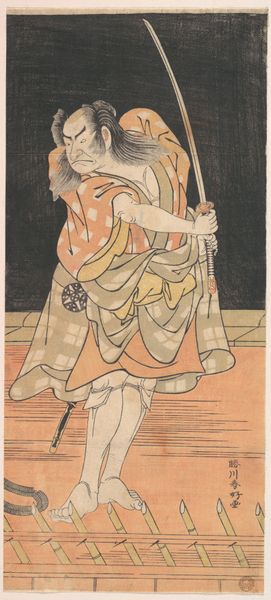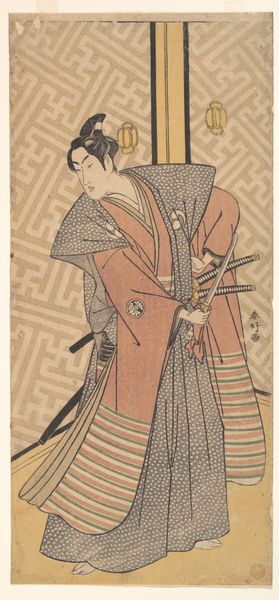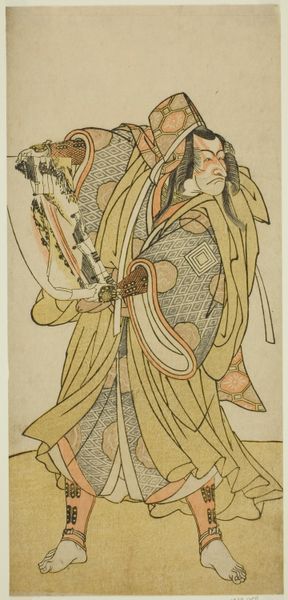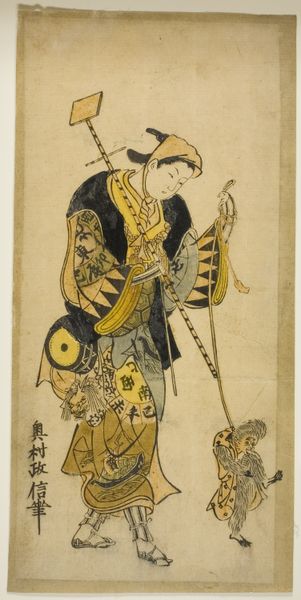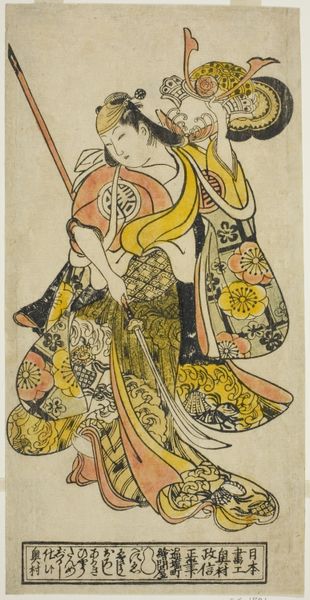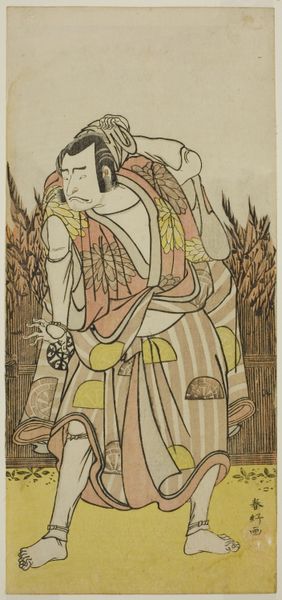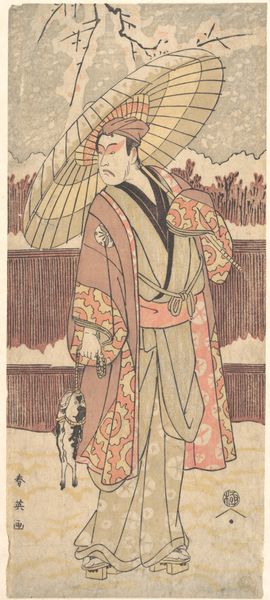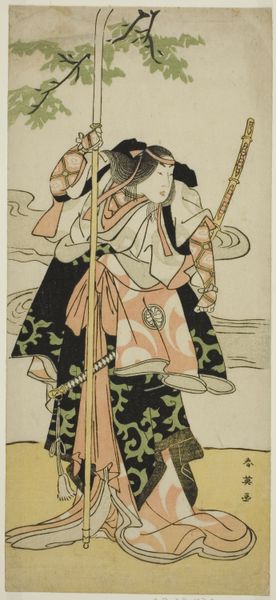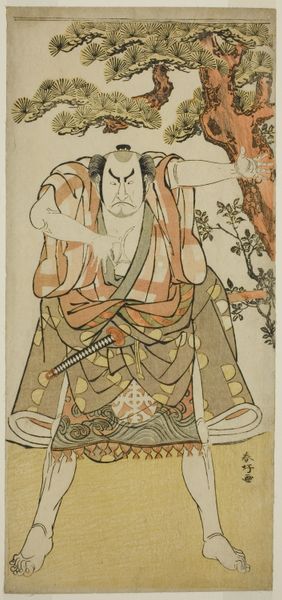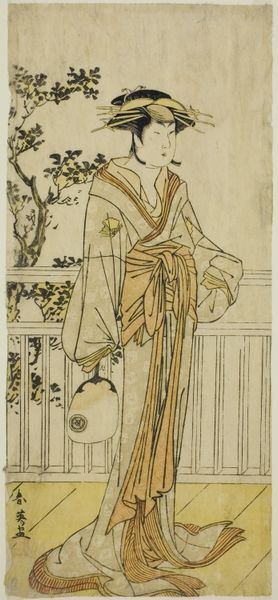
The Actor Mimamsu Tokujiro I as Hayano Kampei, in Act Five of Kanadehon Chushingura (Treasury of the Forty-seven Loyal Retainers), Performed at the Nakamura Theater from the Eleventh Day of the Fifth Month, 1786 c. 1786
0:00
0:00
print, woodblock-print
#
portrait
# print
#
asian-art
#
ukiyo-e
#
figuration
#
woodblock-print
#
genre-painting
Dimensions: 32.7 × 14.7 cm (12 3/8 × 5 3/4 in.)
Copyright: Public Domain
Editor: Here we have Katsukawa Shun'ei's woodblock print, dating from about 1786, depicting the actor Mimamsu Tokujiro I. I find the somber, muted colors really evocative. How do you interpret this work, given its historical and cultural context? Curator: It's powerful, isn't it? This print comes from the Ukiyo-e tradition, literally translating to "pictures of the floating world." These works, especially actor portraits like this one, were hugely popular among the burgeoning urban middle class. How does this inform your understanding, considering social hierarchies and access to the arts at that time? Editor: It's interesting to think about access. These prints made theater and celebrity culture available to a wider audience, almost like a form of early media. How does that relate to the themes explored in the play, *Kanadehon Chushingura*? Curator: Precisely! *Chushingura* is itself a powerful narrative, often interpreted as a commentary on loyalty, revenge, and social justice. Notice the actor’s determined gaze and the symbolic weight of the sword. Considering the feudal structures of Edo-period Japan, could this be seen as a subtle form of resistance or critique? Editor: That's a really interesting point. Seeing it as resistance complicates my initial viewing. I hadn't considered that an actor's portrait could also be read as a kind of social commentary, even a statement. Curator: Ukiyo-e are far more than simple portraits; they capture the spirit and anxieties of a society undergoing rapid change. It’s through these lenses of cultural and political awareness that we can unlock their deeper meaning. Editor: This conversation really shed light on this print, I’ll never look at it the same way again. Curator: And that is exactly why approaching artworks with the critical tools of theory and history enables us to see far more than meets the eye.
Comments
No comments
Be the first to comment and join the conversation on the ultimate creative platform.
